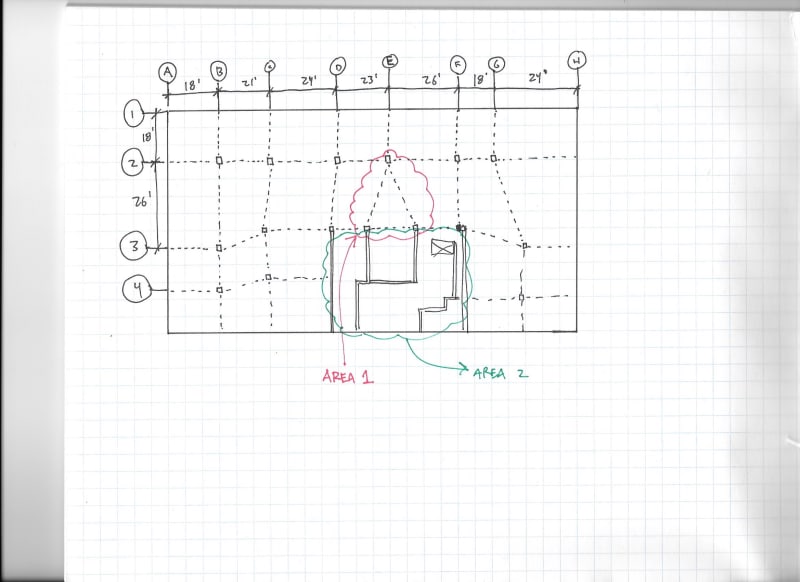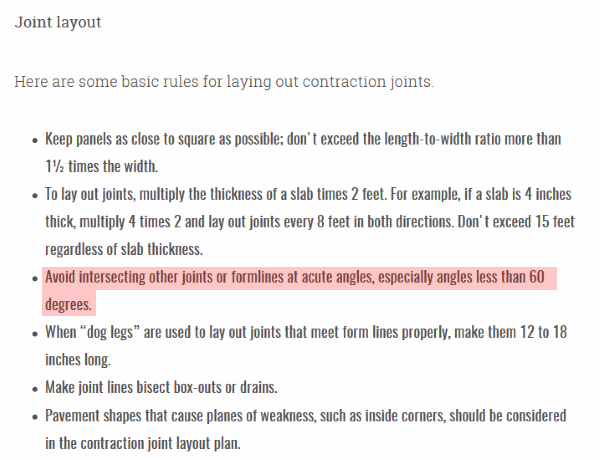I'm dealing with a design situation where the supplied parkade column locations are not aligned. See attached sketch. Back-of-the-envelope scale applies. Item is not constructed.
The first row of columns is relatively fine. There are 7 unequal spans.
The second row, however, has six spans and do not line up with the columns along Gridline 1. "Area 1" is concerning. The literature I have read refers to a handful of rules pertaining to column-to-column cuts, rectangular geometry, and appropriate size. However, there are few examples with irregularity such as this one.
Is a triangular shaped panel acceptable and in what conditions? Would it be more accepted to have mid-panel cuts (ie. one between D/E and F/E)? Other tales of interest and experience with specifying sawcutting?

The first row of columns is relatively fine. There are 7 unequal spans.
The second row, however, has six spans and do not line up with the columns along Gridline 1. "Area 1" is concerning. The literature I have read refers to a handful of rules pertaining to column-to-column cuts, rectangular geometry, and appropriate size. However, there are few examples with irregularity such as this one.
Is a triangular shaped panel acceptable and in what conditions? Would it be more accepted to have mid-panel cuts (ie. one between D/E and F/E)? Other tales of interest and experience with specifying sawcutting?



![[idea] [idea] [idea]](/data/assets/smilies/idea.gif)